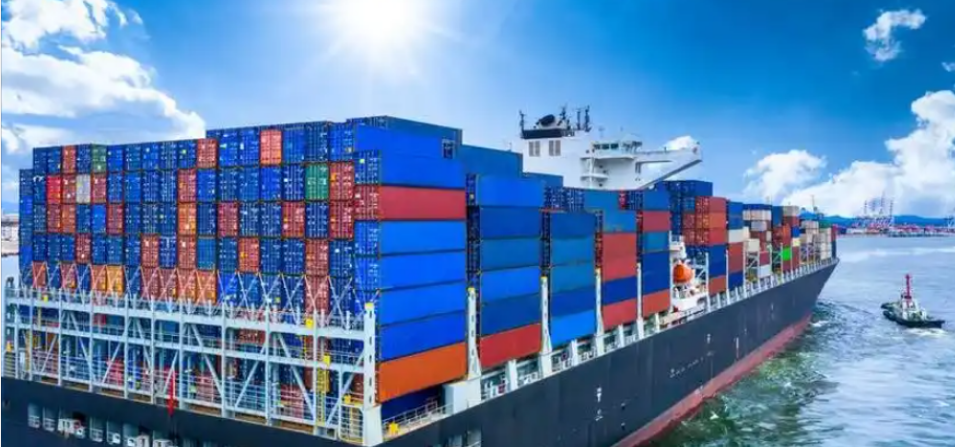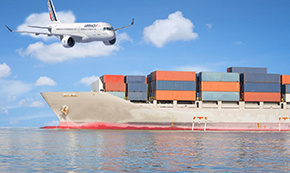All categories >
A Complete Guide to FCL (Non-hazardous) Sea Freight Export: Procedures, Details, and Precautions
Categories:
Industry Encyclopedia
Solution
Time of issue:
2025-04-25 16:44
Views:

In international trade, sea freight is one of the main modes of cargo transportation, and sea freight export of full containers (non-dangerous goods) is a common practice. Today, we will analyze the entire process of full container (non-dangerous goods) sea freight export in detail to help everyone better understand and operate it.
Four Stages of Full Container Sea Freight Export
The sea freight export of full containers (non-dangerous goods) is roughly divided into four stages: cargo collection and booking, arrangement and packing, declaration and allocation, and document review and signing. We will then elaborate on the operation process of each stage in detail.
Stage 1: Cargo Collection and Booking
1. Cargo Collection and Price Inquiry
The cargo owner or freight forwarder inquires about prices from the shipping company or its agent based on information such as the nature, quantity, and destination of the goods. Detailed cargo information, including the cargo name, weight, volume, and destination port, must be provided during the inquiry.
2. Booking
After confirming the price, the cargo owner or freight forwarder submits a booking application to the shipping company or its agent. Detailed cargo information and shipping requirements must be provided with the application.
3. Acceptance of Shipping Application and Booking Confirmation
After reviewing the shipping application, the shipping company or its agent will issue a booking confirmation. The cargo owner or freight forwarder should carefully check the information in the confirmation to ensure its accuracy.
Stage 2: Arrangement and Packing
1. Arrangement
The shipping company or its agent prints out the container cargo consignment note (arrangement sheet) based on the information provided by the cargo owner. The arrangement sheet has nine copies, each with a different use, such as for the cargo owner's records, the shipping agent's records, freight notice, container pickup application, etc.
2. Empty Container Pickup and Loading
According to the arrangement sheet, the cargo owner or freight forwarder arranges for a truck to pick up the empty container from the designated yard and loads the goods into the container. The following two situations should be noted during packing:
• Trailer Loading: The trucking company will tow the empty container to the location specified by the cargo owner for loading, and after loading, the trucking company will tow the container to the dock with the relevant documents.
• Yard Loading: The cargo owner transports the goods to the yard, and the yard arranges a packing plan. After packing, the cargo owner must confirm whether the goods are fully loaded.
3. Container Entry to Terminal
After the container is packed, an on-site staff member must be arranged to stamp the entry at the terminal to ensure that the container enters the terminal smoothly.
4. Border Inspection
If the destination of the vessel is the United States, Japan, South Korea, Taiwan, etc., the border inspection form must be filled out and submitted to the border inspection station two days before departure. After clearance, the relevant documents should be sent to the terminal.
Stage 3: Declaration and Allocation
1. Declaration
The cargo owner or freight forwarder must carry out inspection and customs declaration procedures. Relevant supporting documents for the goods, such as quality inspection reports and health certificates, must be provided during the inspection; commercial invoices, packing lists, and contracts must be provided during customs declaration.
2. Allocation (Loading Plan)
The shipping company arranges the loading plan for the goods based on the loading situation. The cargo owner or freight forwarder should monitor the allocation situation to ensure that the goods are loaded on time.
Stage 4: Document Review and Signing
1. Bill of Lading Review
The shipping company or its agent reviews the contents of the bill of lading to ensure that the information is accurate.
2. Shipowner's Confirmation of Charges
The shipowner confirms all charges, including freight, port charges, Storage charges etc.
3. Advance Remittance Application
The cargo owner or freight forwarder handles the advance remittance application to ensure that payment is smooth.
4. Payment of All Charges
The cargo owner or freight forwarder must pay all relevant charges, including freight, port charges, and storage charges.
5. Signing
The shipping company or its agent issues the bill of lading. After the cargo owner or freight forwarder obtains the bill of lading, they can proceed with subsequent trade operations.
Special Requirements and Precautions
Special Requirements
1. Container Inspection
If the export goods are food, a container inspection is required. The cargo owner should notify the inspector as early as possible of the estimated trailer loading or yard loading time to arrange the inspection plan.
2. Fumigation
If the goods are wood products or use wooden pallets and wooden packaging shipped to European countries, fumigation is required. The cargo owner needs to prepare the relevant materials in advance, including declarations, entrustment letters, letters of guarantee, invoices, packing lists, etc., and contact the Customs broker to schedule fumigation.
Precautions
1. Advance Preparation
The cargo owner or freight forwarder should prepare all relevant documents and materials in advance to ensure that the information is accurate and to avoid delays due to document problems.
2. Attention to Time Nodes
Operations in each stage must be carried out strictly according to the time nodes, especially for border inspection, declaration, and allocation to avoid delays affecting the loading of goods.
3. Communication and Coordination
Maintain close communication with shipping companies, freight forwarders, yards, terminals, etc., and promptly coordinate to resolve any problems that may arise.
4. Compliance with Regulations
Strictly abide by the regulations of customs, border inspection, commodity inspection, and other departments to ensure that the goods are transported legally and in compliance with regulations.
While the process of exporting full container loads (non-hazardous goods) by sea is relatively complex, following the steps above and paying attention to the details will ensure a smooth process. Hopefully, the above information will be helpful. If you have any further questions, please feel free to leave a comment!
Service Hotline: 0755-82171929 13560787209

WeChat QR Code
The above content is for reference only. Please refer to the latest regulations of the shipping company, customs, and relevant regulatory authorities for specific operations.
Keywords:










